In this article:
- How to set a well-defined target search query?
- How to enhance precision by clarifying your search scope?
- Key points to focus on to boost your FTO search
In our previous article, we introduced the basics surrounding an FTO search. In this article, we will demonstrate how to do a freedom to operate search effectively and efficiently step-by-step.
As we mentioned in the previous article, freedom to operate helps you identify whether you are safe to make, use, and sell your product in a country. Follow this FTO search strategy guide to be prepared for commercialization.
1. Set a well-defined target search query
It is important to be clear about what you are looking for. Firstly, you need to be familiar with your own product and the market and industry it belongs to. List out the major features of your product and use them as keywords for your search query.
As an example, the product is a transcutaneous implant. The keyword could be set as transcutaneous and implant. This search query will give you the results of all TAC (Title, Abstract, and Claim) that include these keywords.
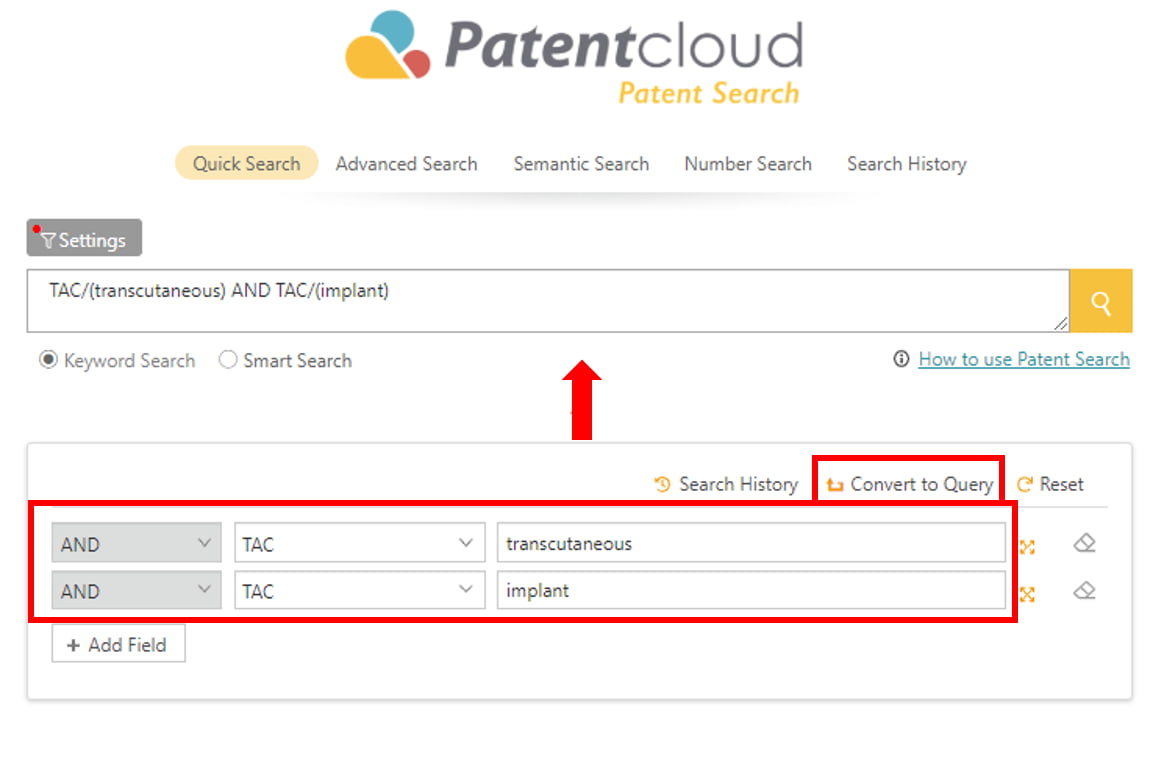
Source: Patent Search
2. Enhance precision by clarifying your search scope
Once you have clarified your search query, you can further narrow down your scope by:
- Country: only select the country you are commercializing the products in.
- Legal status: only active or pending patents may result in infringement issues.
- Current assignee: focus on the major current assignees that have filed lawsuits as
In this scenario analysis, we will assume that most of the patent protections are filed in the US and EP. Therefore, we will begin the analysis by targeting the active US and EP patents of the top five major current assignees in this field (DexCom, Cochlear, Medtronic, Boston Scientific Neuromodulation Corporation, and Ethicon-Endo Surgery.)
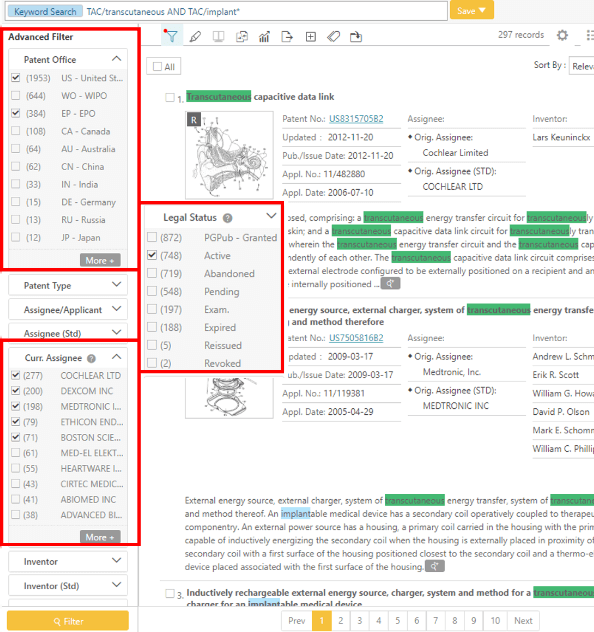
Source: Patent Search
3. Key points to focus on to boost your FTO search
For better, more visual analysis results, we have added the list and their patent families to Patentcloud’s Due Diligence. It automatically provides you with essential information about your patent list in a visual and easy to understand chart form.
This chart shows that most of the patent risks are concentrated in the United States (249) and Europe (47) there are other countries like Austria (4) and Germany (3) that may be risky for this commercialization. It may be a comparably low risk to produce and sell products in other countries.
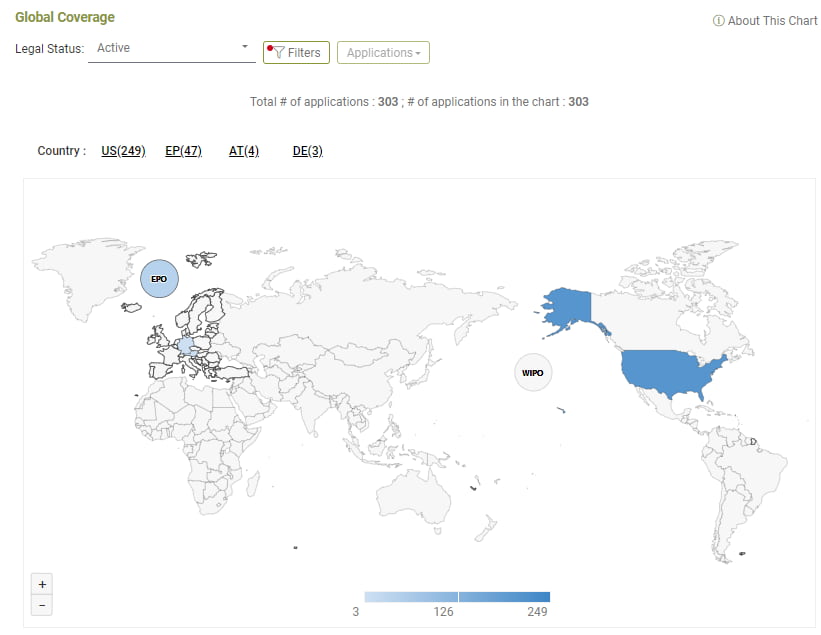
Source: Due Diligence
Timing is important for any business, and whether it meets the marketability or the market demand. From the remaining life of the patent portfolio, you can easily see the technology trends of the industry.
According to the remaining life chart, the patent risks will gradually decrease after 2023. In this case, if commercially viable, it may be a lower-risk strategy to commercialize in countries other than the US and EP, then to enter into the US and European medical device markets from 2023.
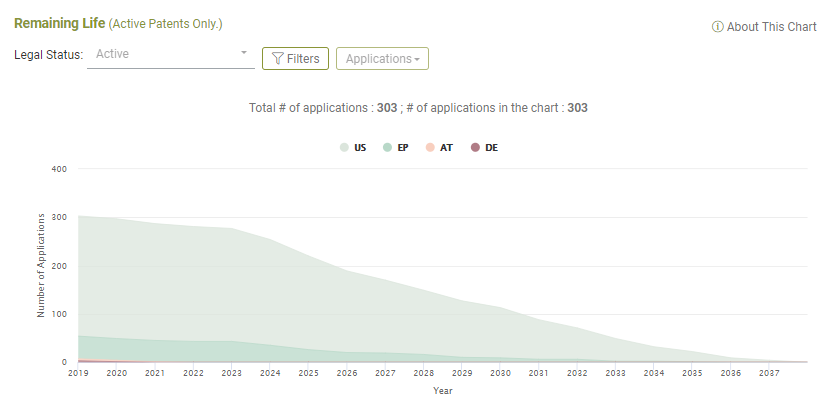
Source: Due Diligence
To perform thorough research, it is necessary to investigate anything that is relevant to the chosen current assignee. Any related patent assignment records are worth looking into.
Transacted patent data can be categorized into transferred, licensed, and pledged. Each may cause their own potential risk.
- Transferred: pay attention to the original owner of these patents. There’s a chance that the patent they are currently holding may be later transferred to the targeted current assignee, putting you at risk in the future.
- Licensed: a licensor who has the ability to monetize one’s patent also has the ability to enforce his or her patent rights. It’s worth paying attention to these licensors.
- Pledged: patents that are under pledge might carry patent rights limitations.
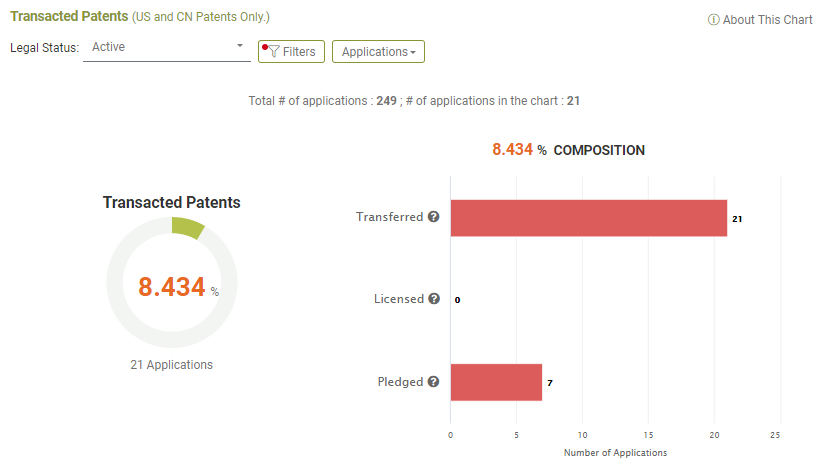
Source: Due Diligence
Besides the transferred patents, it is equally important to discover which patents are being litigated by these major current assignees. These patents can be easily reused to sue other companies for infringement: know these patents and make sure your product does not infringe upon them.
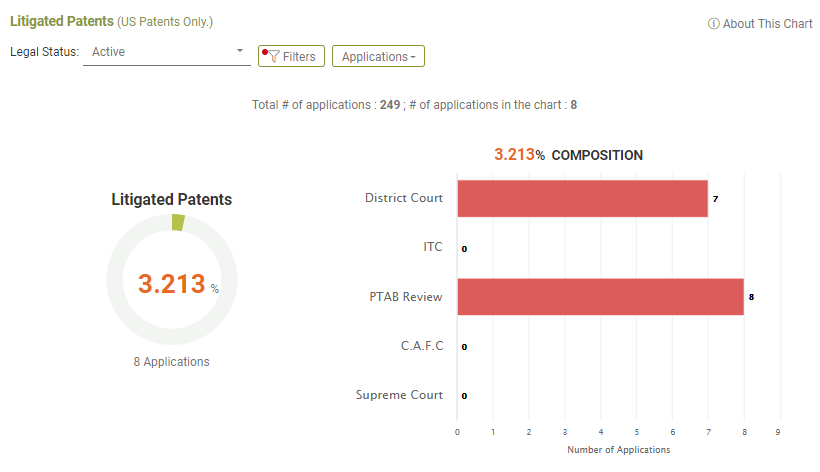
Source: Due Diligence
An FTO search is necessary to eliminate the chance of future legal issues. Repeating these processes with Patent Search and Due Diligence will enable you to perform a thorough FTO search on a budget.
Would you like to conduct your own FTO search analysis of a portfolio?
Contact us to experience it now!


